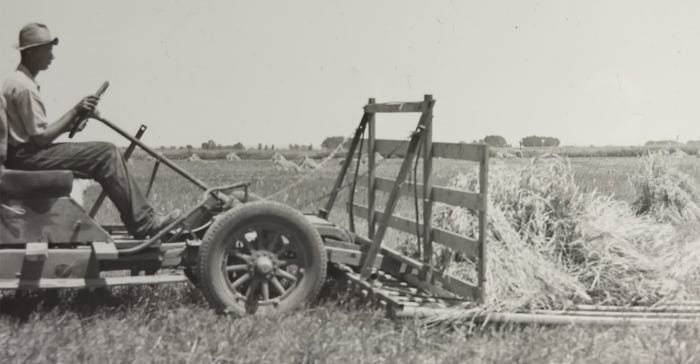
They say a photo is worth 1,000 words. If that’s the case, Nebraska Farmer has accumulated a lot of copy through a massive photo collection dating back to the late 19th century.
A few months ago, Karen Keehr, photograph curator with History Nebraska, picked up 22 boxes of historic photos, negatives and miscellaneous clippings, along with seven binders of slides and transparencies — some dating back more than 100 years — from the Nebraska Farmer offices. The collection is being donated to History Nebraska.
Since then, Annie Johnson, an intern from Nebraska Wesleyan University, has been spending hours upon hours of her time processing, organizing, developing inventory and rehousing the historic Nebraska Farmer photo collection for History Nebraska.
Organizing and inventory
“Annie has been enjoying her internship and has uncovered many spectacular images during her work,” Keehr says. “The images of the Farm Holiday protests and auctions in the 1930s expand our knowledge and add understanding to an important time in Nebraska agricultural history.
“This collection also captures the evolution of different technologies and techniques farmers used for water management and irrigation. As a former 4-H’er, I have a great deal of nostalgia for seeing kids in show rings with their prize animals. I remember all the hard work and pride that is behind those photos.”

HISTORY OF AG: Over the past century and more, Nebraska Farmer has chronicled the history of agriculture in the state through words and photographs, in the form of prints, slides, transparencies and even lantern slides. This historic photo taken from a lantern slide depicts one part of a homemade two-person threshing system on the C.B. Meyers farm near Lexington before 1940. This homemade auto buck rake gathered up the shocks of bundled grain and rapidly transported them to the threshing machines, where another person could pitch the bundles into the thresher. The collection donated recently to History Nebraska depicts through photographs all angles of Nebraska’s rich ag heritage.
Since the first publication of Nebraska Farmer in October 1859, seven years and five months before Nebraska became a state on March 1, 1867, the editors and writers of the publication have scoured the territory, and then the state, for stories to help farmers improve their land, take care of their families and profit from their farm business.
Over the past century and even longer, those writers have been carrying cameras with them to farms and ranches in every corner of the state. This has led to a massive collection of black and white prints, color slides, negatives, transparencies and even lantern slides depicting the history of farming and ranching and rural life in the state.
Real gem
For Keehr and History Nebraska, the collection is a gem. “Nebraska Farmer represents the agricultural history of Nebraska,” she says. “The images in this phenomenal collection document the evolution of farming technology from horse-drawn machinery to GPS-guided combines.”
Keehr notes that History Nebraska has a particularly strong photo archives that include the Solomon Butcher Collection, offering early images of farming and ranching in Nebraska. “The Nebraska Farmer photograph collection is especially strong in images from the post-World War II era until the early 1990s,” she says. “With the addition of this collection, History Nebraska will be able to more fully tell the story of agriculture in Nebraska.”
Keehr says that once the collection is processed and inventoried, it will be sent to Digital Imaging, where it will be scanned and eventually made available through the online Collections Database for the public to search and enjoy.
“Since the days of Robert Furnas, Nebraska Farmer has arrived in the mailboxes of Nebraskans with news of agricultural life from across the state,” Keehr says. “The images in this collection depict the rich history of Nebraska’s deep agricultural roots. They portray the changing agricultural technology and adaptability of Nebraska farmers. History Nebraska is excited to be the permanent home of the Nebraska Farmer photograph collection and to make it accessible to all.”
Learn more about the archives of History Nebraska online at history.nebraska.gov.
About the Author(s)
You May Also Like






